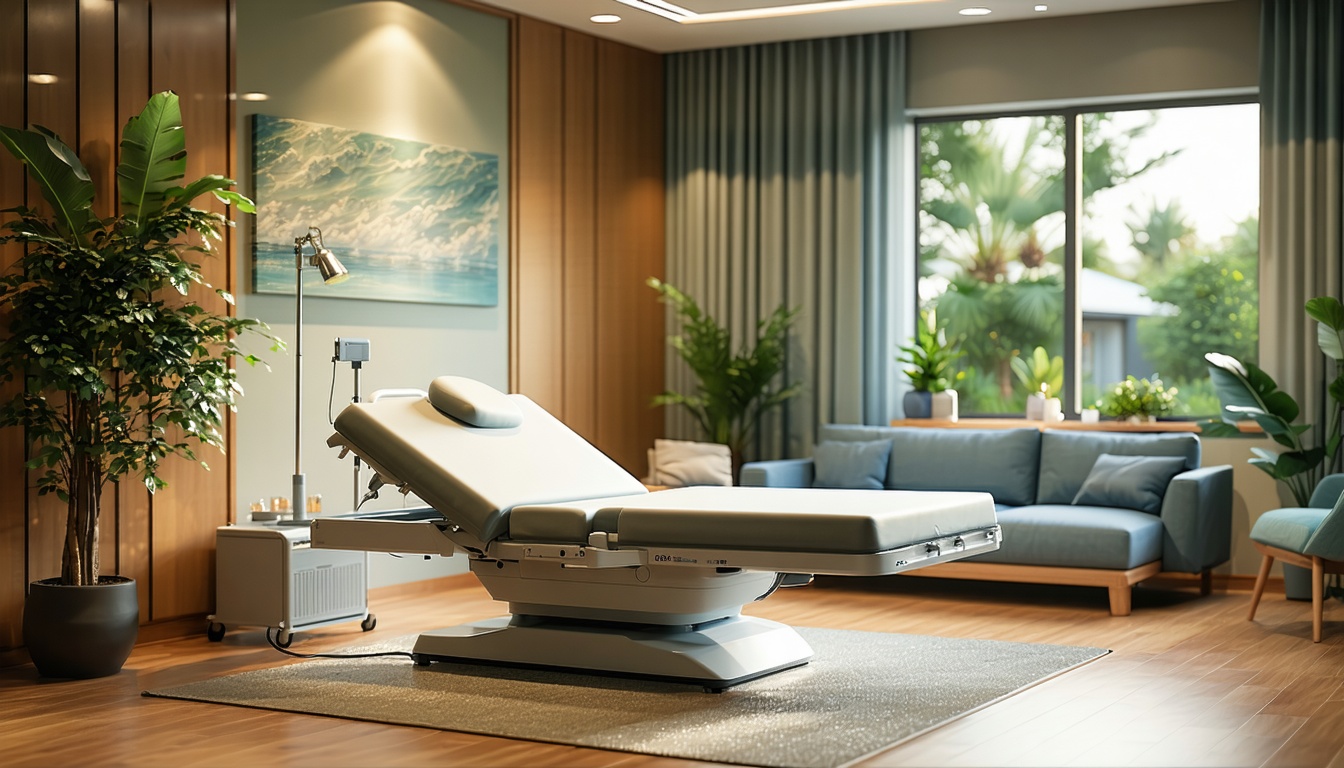Why Choose Kemah Palms
Choosing the right facility for drug and alcohol addiction treatment is crucial for recovery. Kemah Palms provides an inviting environment and professional services tailored to meet individual needs.
Leading Treatment Services
Kemah Palms offers industry-leading treatment services that prioritize not just recovery, but also your ongoing wellness. With a focus on medically supervised detox options, they ensure that each patient receives comprehensive care throughout their treatment journey. Their professional team specializes in various detox programs, including:
| Detox Program Type | Description |
|---|---|
| Alcohol Detox Program | Aimed at safely managing withdrawal symptoms. |
| Drug Detox Program | Customized treatments for various substances. |
| Opioid Detox Program | Specialized care for opioid dependence. |
| Heroin Detox Program | Intensive support for heroin addiction. |
| Cocaine Detox Program | Care tailored for cocaine detoxification. |
| Benzodiazepine Detox Program | Focus on safe tapering off benzodiazepines. |
| Prescription Drug Detox | Addressing issues related to prescription misuse. |
| MDMA Detox Program | Treatment for MDMA dependence. |
This range of services ensures that you will find the appropriate level of care for your specific needs. Their structured programs focus on a holistic approach to recovery, addressing both the physical and psychological aspects of addiction.
Personalized Care Options
At Kemah Palms, personalized care options make your recovery experience unique. With a focus on your individual needs, the facility offers tailored rehabilitation strategies that encompass various therapies. Options include:
- Individual Therapy Sessions: One-on-one sessions with licensed professionals to address underlying issues.
- Group Therapy for Addiction: Support and shared experiences among peers in recovery.
- Family Therapy During Rehab: Engaging family members in the recovery process to strengthen relationships and support systems.
- Dual Diagnosis Rehab: Treatment for both addiction and co-occurring mental health disorders.
The team understands that every recovery journey is different, and they adapt their services to fit you. This dedication to personalized care enhances the effectiveness of their treatment methods, leading to heightened chances of lasting recovery.
For a comprehensive understanding of their treatment services, you may want to look into luxury residential rehab or consider options like the intensive outpatient program for flexible treatment schedules. With a strong emphasis on 24-hour medical monitoring, you can rest assured knowing that professionals are always available to support your endurance through this path to recovery.
Importance of 24-Hour Monitoring
In addiction treatment, ensuring safety and timely intervention is critical. The choice to implement 24-hour medical monitoring brings enhanced patient safety and the capacity for immediate responses to changing health conditions.
Enhanced Patient Safety
Implementing 24-hour medical monitoring significantly improves patient safety in addiction recovery environments. Research indicates that between 10% and 13% of patient deaths in hospitals can be attributed to failures in recognizing and responding to deteriorating health conditions (AHRQ).
Surveillance monitoring systems continuously track vital signs, alerting healthcare staff to serious changes, which can signify distress requiring immediate care. This vigilant approach helps catch potential emergencies before they escalate, ultimately saving lives and ensuring healthier recovery pathways.
| Key Safety Metrics | Description |
|---|---|
| Failure to Recognize Deterioration | 10% – 13% of patient deaths attributed to inaction |
| Continuous Monitoring | Tracks vital signs in real-time, ensuring timely intervention |
Immediate Response to Changes
The capability for immediate responses to changes in a patient’s condition is a cornerstone of 24-hour monitoring. Systems such as Remote Patient Monitoring offer healthcare professionals real-time data, allowing swift evaluations of a patient’s health status. This proactive approach is vital in at-risk populations undergoing withdrawal or in recovery from substance abuse.
Continuous monitoring technology includes automated early warning systems designed to identify clinical deterioration promptly. With rapid data transmission, healthcare providers can intervene effectively without delay, offering targeted care when it’s most needed.
Investing in 24-hour medical monitoring within addiction treatment facilities ensures that patient safety is upheld, enhances the overall quality of care, and improves the likelihood of successful recovery.
For effective drug and alcohol addiction treatment services, consider exploring our medically supervised detox options, including our alcohol detox program and drug detox program.
Benefits of Surveillance Monitoring
Surveillance monitoring provides substantial benefits for patient care, especially in the context of drug and alcohol addiction treatment. This technology enhances the overall effectiveness of medical interventions by ensuring that patients receive timely and appropriate care.
Real-Time Vital Signs
One of the primary advantages of surveillance monitoring is the ability to provide real-time vital signs. Traditional methods in general care units typically involve assessing patient vital signs every 4–8 hours. In contrast, surveillance systems allow for continuous monitoring, significantly enhancing the frequency of data availability. This advancement results in quicker responses to acute events or changes in a patient’s condition.
| Vital Sign Monitoring Frequency | Traditional Method | Surveillance Monitoring |
|---|---|---|
| Duration between assessments | Every 4–8 hours | Continuous |
| Benefits | Limited responsiveness | Immediate intervention capability |
The capability of surveillance systems to track vital signs continuously means that clinicians can closely observe patients, addressing potential complications swiftly and effectively.
Improved Clinician Response
Surveillance monitoring dramatically improves clinician response times in acute situations. The use of advanced sensor technology and alarm systems allows for prompt alerts to healthcare providers when critical changes occur in a patient’s status. These alarm systems are designed to minimize nuisance alerts, reducing the fatigue that often accompanies frequent disturbances. Therefore, when alarms are triggered, they signal serious and sustained changes that require immediate attention.
In addition, the implementation of remote health monitoring systems facilitates better communication between patients and their healthcare teams. This setup provides real-time feedback on patients’ health statuses, enabling rapid interventions and significantly reducing hospitalization rates overall.
Overall, both real-time vital sign availability and improved clinician response times underscore the critical role of 24-hour medical monitoring in providing high-quality care in addiction treatment settings. Emphasizing these benefits will reassure you of the importance of choosing Kemah Palms for recovery.
Utilizing Remote Health Monitoring
Remote health monitoring is an innovative approach that harnesses advanced technologies to support effective medical oversight. At Kemah Palms, we prioritize your recovery through state-of-the-art systems that ensure continuous health tracking.
Advanced Sensor Technology
The advanced sensor technology used in remote health monitoring systems is pivotal for accurate patient assessments. These systems leverage a variety of sensors that track key health metrics, providing real-time feedback to healthcare providers. This technology significantly enhances patient safety by enabling prompt intervention if any concerning changes occur in a patient’s condition (PMC).
| Technology Type | Description |
|---|---|
| Dynamic Metasurface Antennas | Used for enhanced data transmission and connectivity in monitoring applications. |
| Wireless Capsule Endoscopy | Enables real-time image transmission for continuous gastrointestinal monitoring. |
| Biosensors | Highly sensitive detection systems for monitoring vital substances, including glucose and other analytes. |
The advancements in fifth-generation (5G) technologies provide quick data transmission and minimal latency, making them particularly advantageous for elderly patients and anyone requiring consistent oversight.
Wearable Monitoring Devices
Wearable monitoring devices play a crucial role in remote health monitoring. These innovative gadgets can track vital signs, physical activity, and even emotional well-being, ensuring comprehensive care for individuals in recovery. By integrating these devices, Kemah Palms fosters an environment where healthcare providers can continuously monitor the necessary health parameters without the need for constant in-person check-ups.
Wearable devices can include:
- Smartwatches with heart rate monitoring
- Fitness trackers for activity levels
- Biosensors for tracking specific health metrics
- Wireless capsule technology for gastrointestinal health
These technologies not only promote accountability in health tracking but also encourage patients to be proactive about their recovery journey. For clients enrolled in our programs, these devices can seamlessly integrate with 24-hour medical monitoring, providing peace of mind for both you and your loved ones.
By utilizing advanced sensor technology and wearable devices, Kemah Palms ensures a high standard of care during your recovery process, facilitating timely responses and improving overall health outcomes.
Remote Patient Monitoring
Remote patient monitoring (RPM) provides innovative solutions for the healthcare industry, allowing you to manage and monitor your health from the comfort of home. This technology facilitates real-time data gathering and presents cost-effective care solutions for those requiring continuous medical attention.
Real-Time Data Gathering
RPM allows healthcare practitioners to gather real-time data to remotely evaluate your health status. This continuous monitoring helps ensure that any potential issues are identified promptly, fostering a proactive approach to healthcare. The implementation of systems like inhaler sensors and mobile health applications has been shown to positively impact patient outcomes and compliance with treatment regimes (NCBI).
| Technology Used | Purpose |
|---|---|
| Inhaler Sensors | Monitor lung function and medication compliance. |
| Mobile Health Applications | Track health metrics and facilitate communication. |
| Remote Monitoring Devices | Instantly relay critical health updates to providers. |
Utilizing these technologies, healthcare professionals can manage conditions more effectively and provide timely interventions, enhancing the overall quality of care offered.
Cost-Effective Care Solutions
Remote patient monitoring is a cost-saving approach, allowing you to remain in the comfort of your home instead of occupying scarce space in nursing homes or hospitals. This advantage not only reduces healthcare spending but also enhances the patient experience by minimizing the inconvenience of frequent facility visits.
Healthcare practitioners utilizing telemonitoring technologies have reported significant benefits, including increased patient compliance and better communication, along with greater patient education regarding their health (NCBI).
| Benefit | Description |
|---|---|
| Enhanced Patient Compliance | Continuous monitoring helps engage patients in their treatment. |
| Reduced Healthcare Costs | Lower facility utilization leads to decreased overall expenses. |
| Improved Communication | Easier access to healthcare providers encourages ongoing dialogue. |
Investing in 24-hour medical monitoring can facilitate better health outcomes while supporting an efficient and patient-centered care experience. For specialized treatment options, consider exploring our medically supervised detox programs or other tailored solutions available at Kemah Palms.
The Future of Healthcare Monitoring
Continuous Monitoring Systems
The advancement of technology has led to the emergence of continuous monitoring systems that are revolutionizing the way healthcare is delivered. Systems such as the Remote Patient Monitoring System (RPMS) with an automated early warning system (R-EWS) allow healthcare providers to identify clinical deterioration earlier. This capability empowers healthcare professionals to intervene promptly and effectively, thereby enhancing patient care.
In clinical studies, R-EWS demonstrated a high sensitivity of 97.37%. This means that the system is very effective at detecting changes in a patient’s condition. It generated an average of 15 alerts per patient over 24 hours, making it a more manageable workload for healthcare professionals compared to other systems that may generate a higher volume of alerts.
| Key Features of Continuous Monitoring Systems | Sensitivity (%) | Alerts per Patient (24 Hours) |
|---|---|---|
| R-EWS | 97.37 | 15 |
Promoting Early Interventions
The benefits of utilizing continuous monitoring systems extend beyond simple data collection. They play a critical role in promoting early interventions in patient care. In a study of 905 patients, the average time from the initial alert to clinical deterioration was notably shorter for those using these systems. Continuous monitoring can provide alert notifications earlier compared to intermittent systems, giving healthcare professionals a crucial advantage in managing patient health (Journal of Medical Internet Research).
These systems help in distinguishing between stable patients and those at risk of deterioration, allowing healthcare teams to prioritize care effectively. For instance, R-EWS had a higher proportion of critical alerts in tiers 2 and 3 among deteriorating patients, showcasing its efficacy in identifying individuals who require immediate attention.
The integration of continuous monitoring systems within the recovery process at facilities like Kemah Palms ensures that you or your loved one receive consistent and proactive healthcare support, enhancing the overall treatment experience. Consider the advantages of medically supervised detox and other tailored programs available to provide the best care possible in your journey towards recovery.







